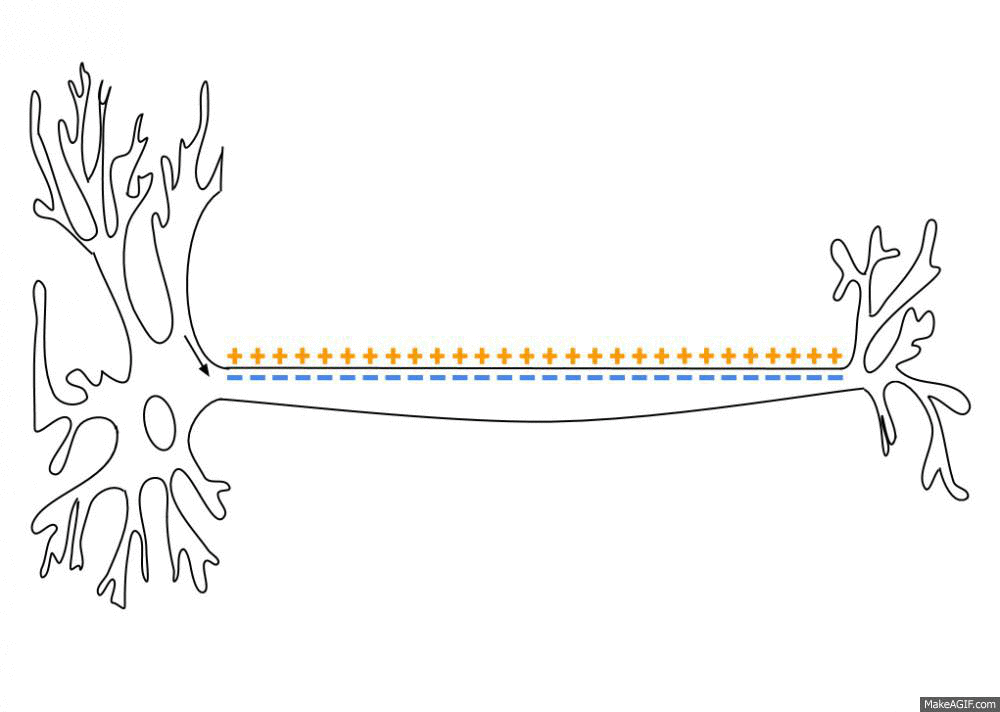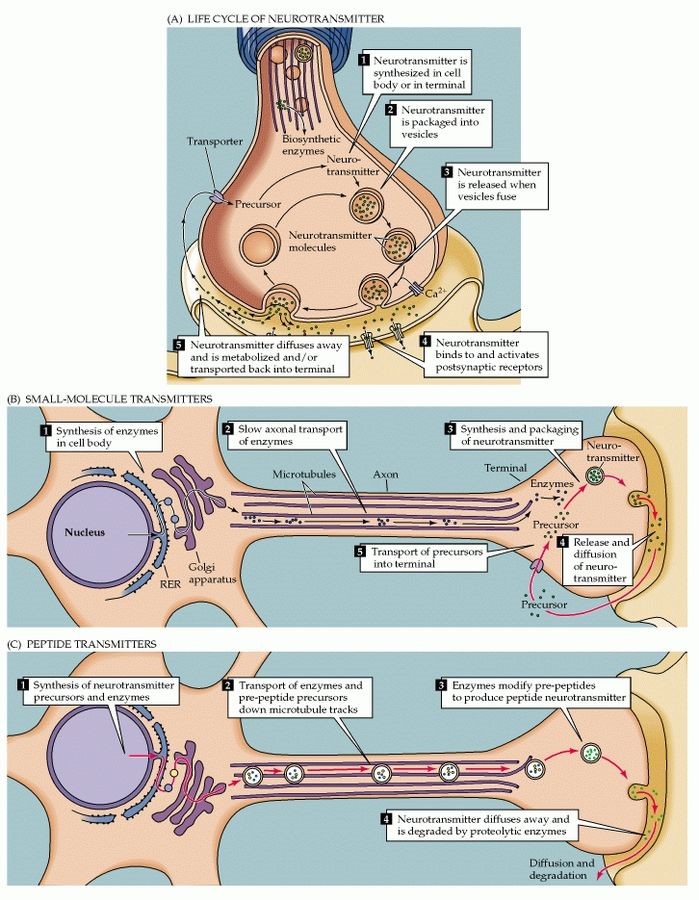CHAPTER 1: Brain Basics
Neurotransmitters and Neuromodulators
1The ability of a neuron to generate an electrical impulse depends on a difference in charge between the inside and outside of the cell. When a nerve impulse begins, a dramatic reversal in the electrical potential occurs on the cell’s membrane, as the neuron switches from an internal negative charge to a positive charge state. The change, called an action potencial, then passes along the axon’s membrane at speeds up to several hundred miles per hour. In this way, a neuron may be able to fire impulses multiple times every second.
2When these voltage changes reach the end of an axon, they trigger the release of neurotransmitters, the brain’s chemical messengers. Neurotransmitters are released at nerve terminals, diffuse across the synapse, and bind to receptors on the surface of the target cell (often another neuron, but also possibly a muscle or gland cell). These receptors act as on-and-off switches for the next cell. Each receptor has a distinctly shaped region that selectively recognizes a particular chemical messenger. A neurotransmitter fits into this region in much the same way that a key fits into a lock. When the transmitter is in place, this interaction alters the target cell’s membrane potential and triggers a response from the target cell, such as the generation of an action potencial, the contraction of a muscle, the stimulation of enzyme activity, or the inhibition of neurotransmitters release.

3An increased understanding of neurotransmitters in the brain and knowledge of the effects of drugs on these chemicals — gained largely through animal research — comprise one of the largest research efforts in neuroscience. Scientists hope that this information will help them become more knowledgeable about the circuits responsible for disorders such as Alzheimer’s and Parkinson’s diseases.

4Sorting out the various chemical circuits is vital to understanding the broad spectrum of the brain’s functions, including how the brain stores memories, why sex is such a powerful motivation, and what makes up the biological basis of mental illness.
5There are many different kinds of neurotransmitters, and they all play an essential role in the human body. The next section provides a summary of key neurotransmitters and neuromodulators, chemicals that help shape overall activity in the brain.